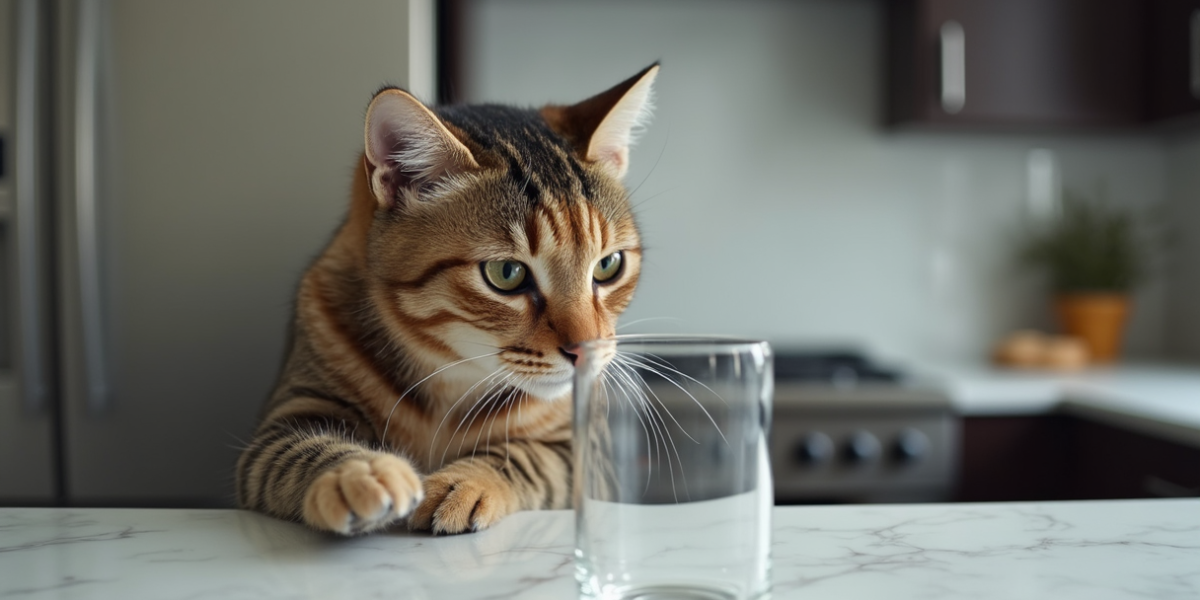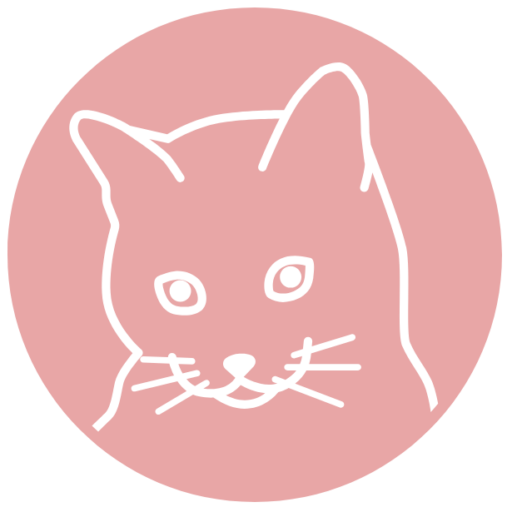If you’ve ever found yourself in the midst of a quiet afternoon, only to be jolted by the unmistakable sound of a cherished vase crashing to the floor, you’re not alone. Cats are notorious for their penchant for knocking things over, transforming our serene living spaces into their very own playgrounds of chaos. But why do our feline friends engage in this seemingly mischievous behavior? Is it mere curiosity, a playful instinct, or something deeper? In this blog post, we’ll delve into the curious case of cat chaos, exploring the motivations behind this quirky habit and shedding light on the fascinating psychology of our beloved pets. From their innate hunting instincts to their need for stimulation and attention, understanding the reasons behind their playful destruction can help us foster a more harmonious home while nurturing our cats’ natural behaviors. So, let’s unravel the mystery and discover what drives our furry companions to create a little chaos in our lives!
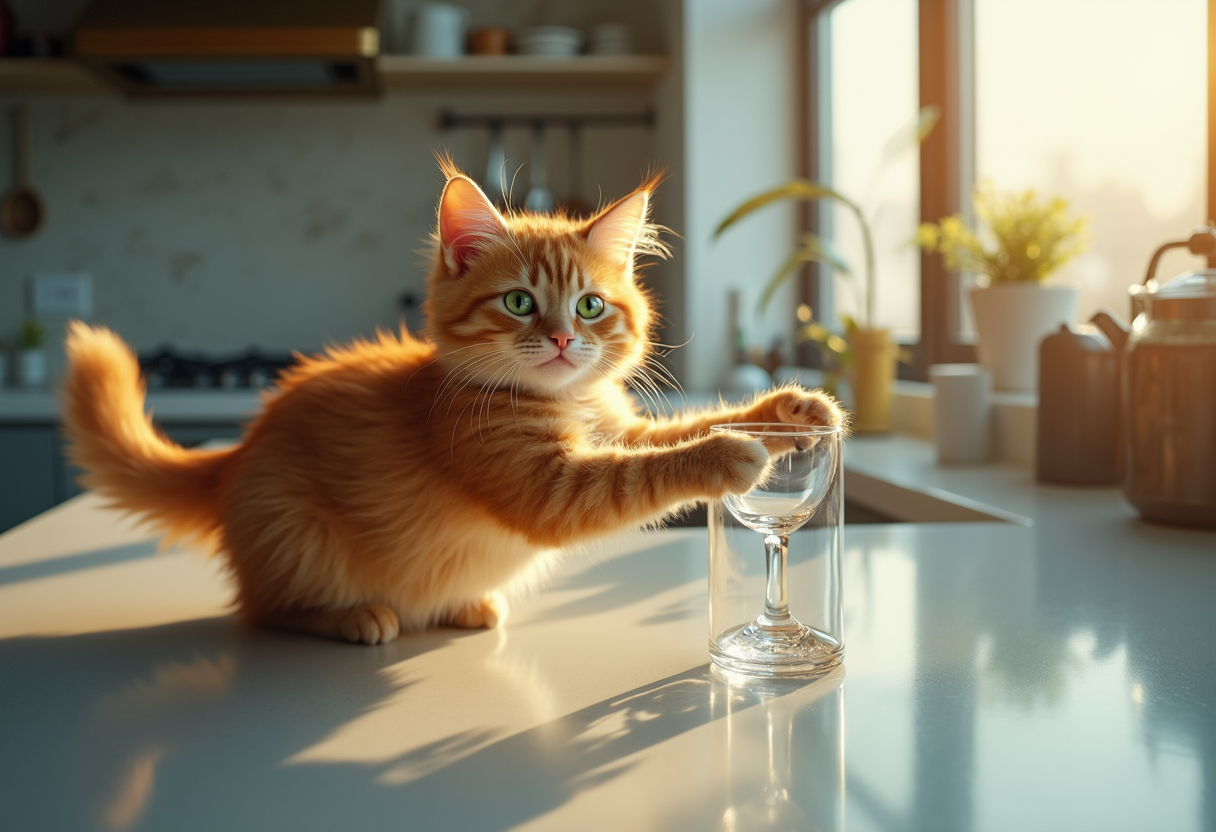
1. The Instincts Behind the Chaos: Hunting and Play
Cats are fascinating creatures, driven by a complex mix of instinctual behaviors that often manifest in seemingly chaotic ways—most notably, their penchant for knocking things over. At the heart of this behavior lies the deep-seated instincts of hunting and play, which are integral to a cat’s nature.
In the wild, cats are natural hunters, and their play often mimics the behaviors they would use to catch prey. When your cat swats at your favorite knickknack or sends a cup tumbling off the table, it’s not merely an act of mischief; it’s a reflection of their innate hunting instincts. The act of batting at objects allows them to hone their skills, mimicking how they would stalk and pounce on small animals like birds or rodents. The sight and sound of an object falling can also provide immediate gratification, as it resembles the thrill of the chase—the rush of success that follows a successful hunt.
Additionally, cats are incredibly curious by nature. Their exploratory instincts drive them to investigate their environment, often by testing their boundaries. Knocking over objects can be a way of gaining information about their surroundings, learning what can be moved and what cannot, and discovering how different materials react to their touch. This behavior is particularly pronounced in younger cats and kittens, who are still mastering their physical abilities and testing their limits.
Playtime is also crucial for a cat’s development. Engaging in playful antics, including knocking things over, helps cats expend energy, stimulates their minds, and provides a necessary outlet for their natural instincts. This is especially true for indoor cats who may not have access to the same hunting opportunities as their outdoor counterparts.
So the next time you find your favorite vase shattered on the floor, remember that it’s not just a case of cat chaos. It’s a manifestation of their instinctual drive to hunt, explore, and play—an essential part of what makes your feline friend so uniquely delightful, if occasionally frustrating! Understanding this behavior can help you set up a more engaging environment that channels their instincts in a positive way, perhaps by providing interactive toys or designated play areas that satisfy their curiosity while protecting your cherished belongings.
2. Attention-Seeking Behavior: Are They Trying to Communicate?
Cats are fascinating creatures, full of quirks and idiosyncrasies that often leave us scratching our heads. One of the most perplexing behaviors is their penchant for knocking things over—be it your favorite mug, a decorative vase, or even a pile of papers. While it may seem chaotic and frustrating, this behavior often stems from attention-seeking motives. Cats are highly intelligent animals and possess a keen understanding of their surroundings, including how their humans react to their antics.
When your feline friend sends an object tumbling off the edge of a table, it’s more than just a playful gesture; it’s a form of communication. Cats are adept at associating their actions with the responses they provoke. If knocking over a plant elicits a gasp followed by a flurry of attention—whether it’s scolding or simply picking up the mess—your cat may interpret this as a successful way to engage with you. In their eyes, any attention, positive or negative, is better than being ignored.
Moreover, this behavior can also reflect a need for stimulation or a desire to explore their environment. Cats are naturally curious and enjoy investigating their world, often using their paws to test the limits of their surroundings. By knocking things over, they may be seeking to interact with their environment in a more dynamic way, essentially playing a game of cause and effect. Providing your cat with engaging toys, climbing structures, or interactive playtime can help redirect this behavior.
Understanding that your cat’s chaotic antics are often a plea for attention or engagement can transform your perspective. Instead of viewing these moments solely as troublesome, consider them as opportunities to connect with your furry companion and enhance their playtime experience. After all, your cat is not just littering your home; they’re expressing their needs and trying to forge a bond with you—albeit in their uniquely mischievous way.
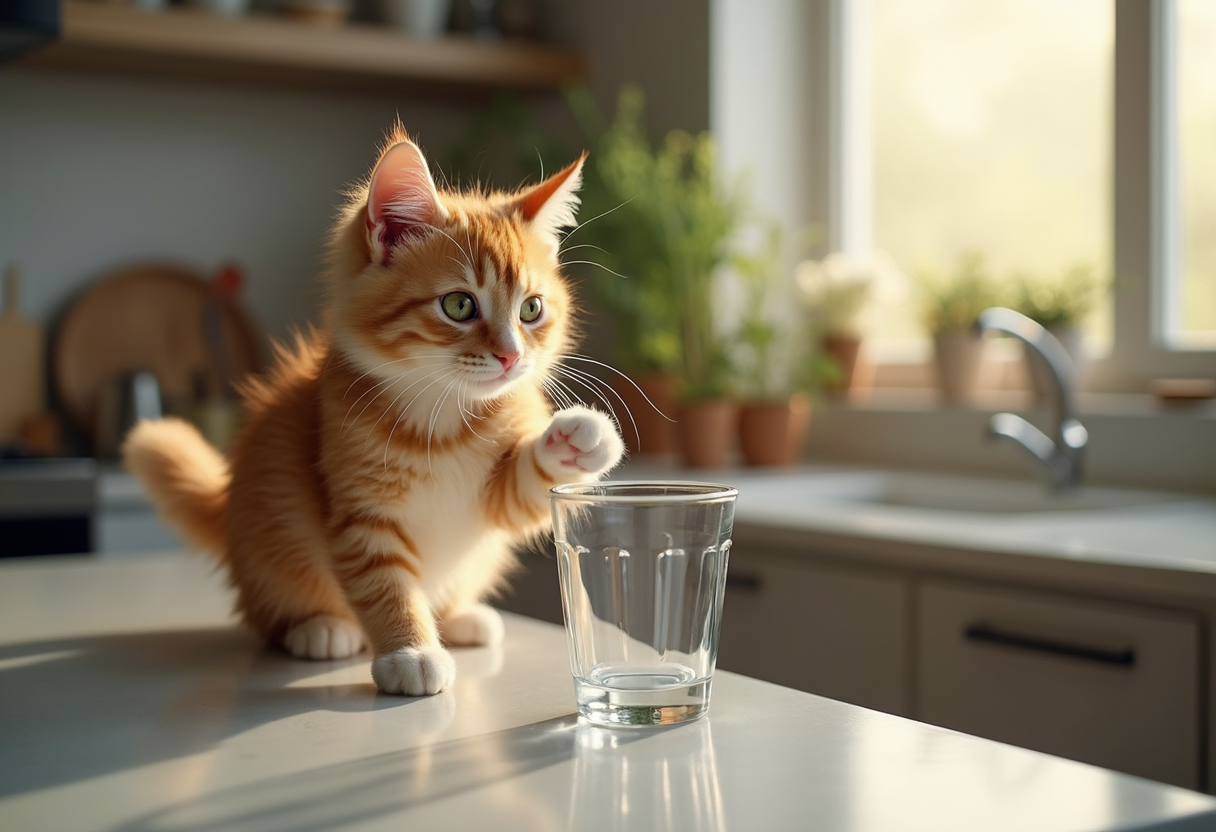
3. Environmental Enrichment: Keeping Your Cat Stimulated
Cats are naturally curious creatures, and their penchant for knocking things over can often be traced back to their need for environmental enrichment. When your feline friend sends a glass of water tumbling off the edge of the table, it may not be mere mischief; instead, it can be a sign that they are seeking mental and physical stimulation. Cats thrive in dynamic environments that challenge their instincts and encourage exploration. To keep your cat engaged and satisfied, consider introducing a variety of stimulating elements into their surroundings.
Start by incorporating interactive toys that mimic the movement of prey, such as feather wands, laser pointers, or battery-operated mice. These toys tap into your cat’s hunting instincts, providing both exercise and mental stimulation. Additionally, consider creating vertical spaces for climbing, such as cat trees or shelves, which allow your kitty to survey their territory from above—their natural instinct as hunters.
Another effective way to enrich your cat’s environment is by regularly rotating toys and introducing new ones. This simple change can reignite their interest and keep their curiosity piqued. Engage them with puzzle feeders or treat-dispensing toys, which challenge their problem-solving skills and provide rewarding mental stimulation.
Lastly, don’t underestimate the power of playtime with you. Regular interactive sessions strengthen your bond with your cat while allowing them the chance to expend energy in a productive way. By investing in environmental enrichment, you can create a more fulfilling space for your cat, ultimately reducing their need to knock things over for entertainment. With the right stimulation, your furry companion can channel their energy into play rather than chaos, making for a happier home for both of you.
4. Tips for Cat-Proofing Your Home
Cat-proofing your home can be a fun and creative challenge that not only protects your belongings but also enhances your cat’s environment. Here are some practical tips to keep your items safe while ensuring your feline friend has an engaging space to explore.
1. Create Designated Play Areas: Cats are natural explorers and climbers. To channel their energy, designate specific areas as play zones, complete with scratching posts, climbing shelves, and interactive toys. This keeps them occupied and less likely to turn to your shelves and countertops for entertainment.
2. Secure Loose Items: Start by surveying your home for items that are easily knocked over. From picture frames to decorative knickknacks, secure these items by using museum putty or adhesive strips designed for securing objects in place. Additionally, consider relocating fragile or valuable items to higher shelves, out of feline reach.
3. Use Storage Solutions: Invest in stylish storage bins or decorative boxes that can conceal smaller items and prevent clutter from becoming tempting targets. This not only keeps your space tidy but also minimizes the number of objects your cat can accidentally dislodge.
4. Rearrange Furniture Wisely: Position furniture strategically to create barriers against curious paws. For instance, placing heavier items at the back of shelves or utilizing furniture with enclosed storage can deter cats from reaching for items that could easily be toppled.
5. Deter with Scents: Cats are often sensitive to certain scents. Using citrus sprays or placing citrus peels near areas you want to protect can act as a natural deterrent. You might also consider using double-sided tape or aluminum foil on surfaces you want to keep off-limits, as cats generally dislike the texture.
6. Provide Enrichment: Ensure your cat has plenty of stimulation through toys, scratching posts, and puzzle feeders. Keeping their minds and bodies engaged can reduce their desire to engage in mischievous behaviors, like knocking things over out of boredom.
By implementing these tips, you can create a harmonious living space that accommodates your cat’s playful spirit while safeguarding your cherished belongings. Remember, understanding your feline’s instincts is the key to finding a balance between your home decor and their natural curiosity!
5. Understanding Your Cat’s Personality and Preferences
Understanding your cat’s personality and preferences is key to deciphering the curious case of their chaotic behavior, particularly the infamous habit of knocking things over. Cats are inherently curious creatures, driven by instincts that urge them to explore their environment. This exploration often leads them to investigate objects by swatting or nudging them, allowing them to gauge their stability and potential for movement. It’s important to remember that cats possess individual personalities, with some being more playful and mischievous than others.
For instance, you might find that your feline friend, who exhibits a calm demeanor during the day, transforms into a little whirlwind of energy at night, knocking over cups and trinkets in an enthusiastic display of play. Understanding your cat’s preferences can also shed light on their behavior. Cats are often attracted to shiny, dangling, or precariously positioned items, which they perceive as toys.
Moreover, the environment you create for your cat plays a significant role in their antics. A cluttered or unengaging space might lead them to seek entertainment through knocking things over, while a well-structured area filled with designated play items can redirect their curiosity into more appropriate avenues. By observing your cat’s unique inclinations and finding ways to accommodate their playful nature, you can not only minimize the chaos but also enrich their experience, leading to a happier and more fulfilled feline companion.
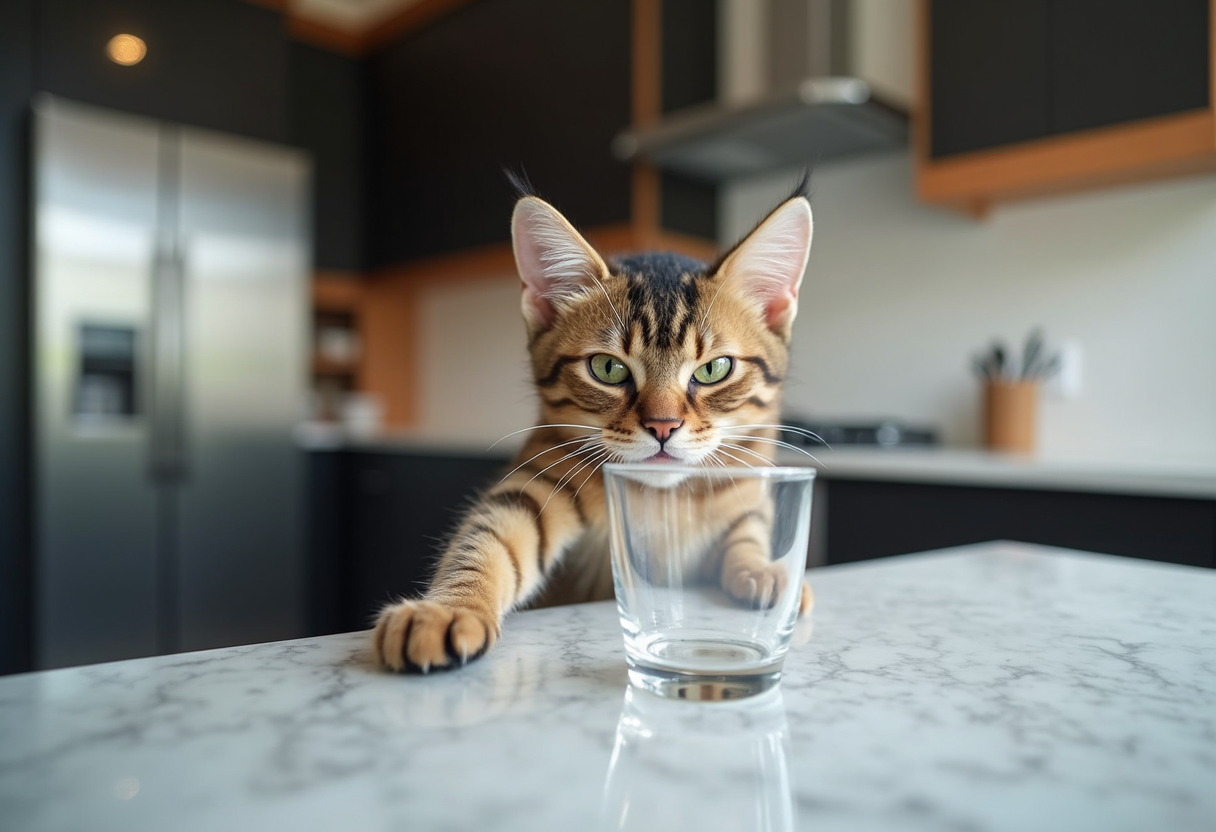
6. Embracing the Chaos with Love and Patience
As cat owners, we often find ourselves in a constant battle against the whims of our feline companions. Those precious moments when you hear a crash from the living room, only to find your prized vase shattered on the floor, can be both infuriating and bewildering. However, instead of succumbing to frustration, embracing the chaos with love and patience is the key to understanding this quirky behavior.
Cats are instinctual creatures, driven by their natural curiosity and a playful spirit that often leads them to explore their environment in ways we may not always appreciate. When they knock things over, it’s not merely a desire to annoy us; rather, it’s a form of play and exploration. They are testing the limits of their surroundings, exercising their predatory instincts, and engaging in behaviors that come naturally to them.
To embrace this chaos, start by observing your cat’s behavior and understanding their motivations. Provide them with alternative outlets for their energy and curiosity—consider investing in interactive toys, climbing structures, or puzzle feeders that can keep them engaged and less likely to turn your decor into toys. Additionally, creating a designated play area can help channel their playful tendencies while preserving your precious items.
Above all, approach the situation with a sense of humor and forgiveness. Cats are unpredictable, and their antics often lead to unexpected laughter and memorable moments. By accepting this aspect of cat ownership, you can cultivate a deeper bond with your furry friend, one that thrives on love, understanding, and a little bit of chaos. After all, life with a cat is never dull, and those moments of disruption remind us just how vibrant and spirited our companions truly are. Embrace the mess, cherish the memories, and enjoy the delightful journey that comes with sharing your home with a curious cat.

